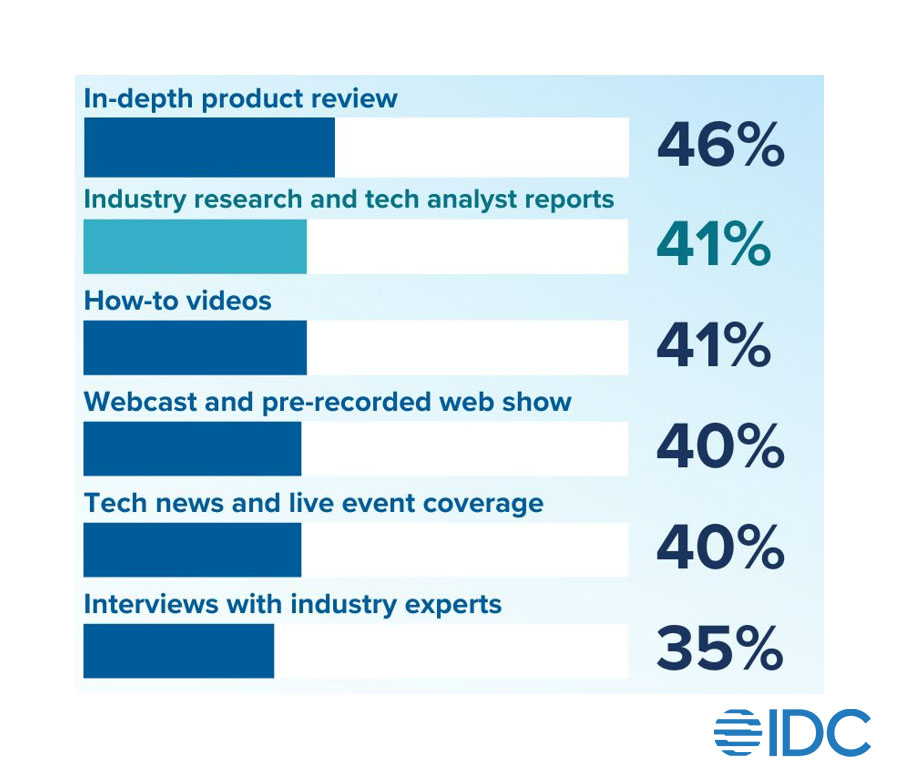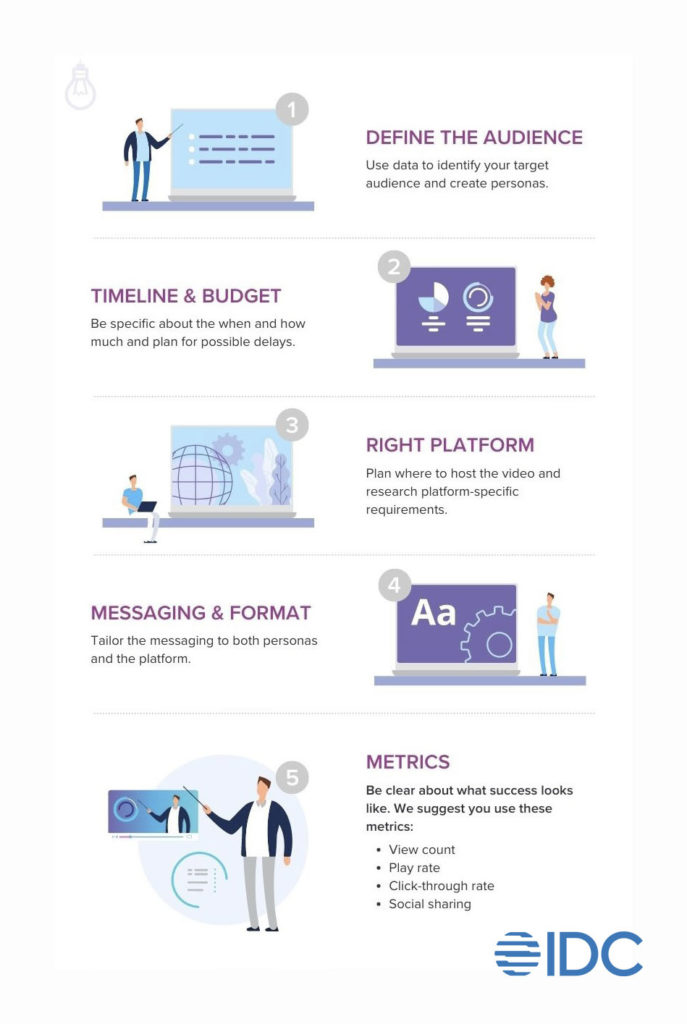There is no doubt that we live in the age of video. IDC research shows a 32% increase in video usage since the start of the pandemic. Whether it’s watching YouTube clips to research a product or service, attending B2B meetings and events live online, or watching news reels on Instagram, the use of this medium has grown in all areas of communication. Other than a live personal interaction, nothing tells a story, communicates, informs, or entertains better than video.
“Every industry has the opportunity to use video to educate, persuade, and communicate with its customers. Defining and implementing a cohesive content strategy can be a game changer in how an organization connects with its employees and customers in a more engaging and immersive manner.” (Marci Maddox, research vice president, IDC Digital Experience Strategies)
All generations and demographics prefer to interact with video and other rich media over any other content. While in the past consumers would look at online reviews, read blog posts, or watch commercials, now they are relying more heavily on this type of content in their research phase.
B2B customers use video for many professional reasons.
Which of the following types of technology-related video content are you likely to watch for business purposes?

Source: Foundry Role & Influencer of the Technology Decision-Maker Survey, 2022
Lights! Camera! Leads?
A recent study from Wyzowl found that 86% of businesses use video as a marketing tool. But does this mean that they all make a significant impact? Can you even remember the last marketing video that really impressed you and made you act?
Most marketing videos are light on information and heavy on repetition. You can and should do better, as a well-planned video can create a powerful, lasting impact, create brand awareness, and ultimately leads.
You are ready to invest in video. Read on to learn how to create a video that really delivers results.
The Makings of a Great Video
You might want to delve straight into pre-production, but have you thought about the reason you want to use video and who it will address? What’s the story you are telling, how do you want to tell it, and who do you tell it to? And, most importantly, will it satisfy your audience’s needs and pain points? Only then you can decide on what video format, if any, you want to use.
Also, remember to make the video timely as well as respectful of other people’s time. Don’t waste your time with lengthy introductions. Instead, get straight to the point.
Finally, what’s the rationale behind the video? How does it fit into your overall content strategy? What’s the messaging? Where will you promote it? Is it part of a series?
To sum it up: Remember the three Rs – reason, respect, and rationale – before you even start pre-production. This will save you time as well as money in the longer run.
5 Steps to Successful Video Marketing

Define the audience
Knowing who you market to is the key to a successful campaign. Use reliable data to identify your target audience and create personas to express clearly who you have in mind when creating your content.
Set a timeline and budget
Even though we are not about talking Hollywood-like productions, the creation of video content can be time-consuming and expensive. That’s why it’s important to create a clear timeline for every step of the process and plan for occasional delays. Even a small production relies on the skills of many different people, so using basic project management tools will save you time and money.
Choose the best hosting platform
Before creating your video, think about where you will be hosting it and research platform-specific requirements. You will want to consider what people on each platform are looking for. Also, take into consideration that a video doesn’t promote itself. You will have to put in some time and effort to make sure your video gets seen by the right people.
Develop messaging and choose the right type of video
Your message should always be tailored to both personas and the platform. For example, longer formats work well on YouTube, while other social media channels like Instagram prefer short-form content.
Decide which metrics you will track and what success looks like
Before you start production, you must be clear about what success will look like. The best place to find out which metrics to use is to define the video’s place in the marketing funnel.
For example, if you address the top of the funnel, and your aim is to introduce your brand to potential customers, your KPIs will be related to the discovery of the brand, not sales. Examples of this are total views, view duration, or 3-second views.
If you are looking to deepen the relationship with potential customers mid-funnel and create consideration content, you will be looking at metrics like click-through rates or view length.
Only at the conversion stage at the bottom of the funnel, your KPIs should be related to sales outcomes.
Interested in learning more? Download IDC’s Tech Marketer’s Guide to Video Marketing today.




